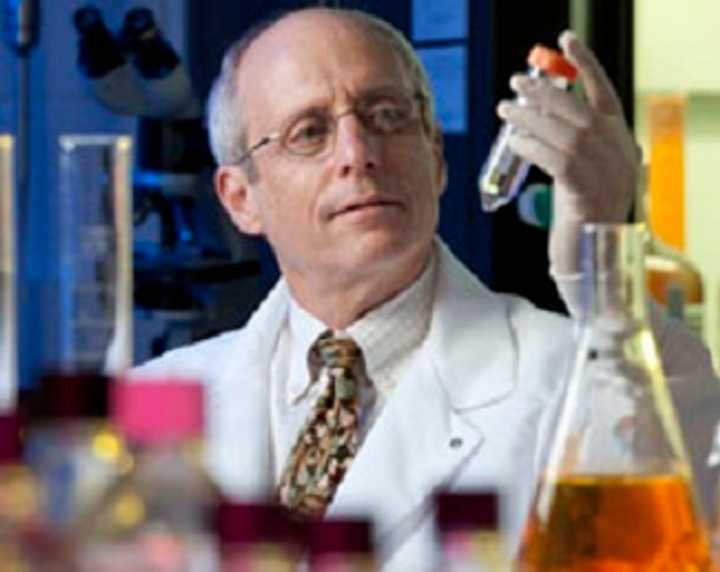Karl Herrup (PHOTO: Nick Romanenko / Rutgers University)
In today’s online edition of Nature Medicine, Karl Herrup, chair of the Department of Cell Biology and Neuroscience in the School of Arts and Sciences provides new information on why this genetic disease attacks the cerebellum – a part of the brain that controls movement coordination, equilibrium, and muscle tone – and other regions of the brain.
Using mouse and human brain tissue studies, Herrup and his colleagues at Rutgers found that in the brain tissue of young adults who died from axtaxia-telangiectasia, or A-T disease, a protein known as HDAC4 was in the wrong place. HDAC4 is known to regulate bone and muscle development, but it is also found in the nerve cells of the brain.
The protein that is defective in A-T, they discovered, plays a critical role in keeping HDAC4 from ending up in the nucleus of the nerve cell instead of in the cytoplasm where it belongs. In a properly working nerve cell, the HDAC4 in the cytoplasm helps to prevent nerve cell degeneration; however, in the brain tissue of young adults who had died from A-T disease, the protein was in the nucleus where it attacked the histones – the small proteins that coat and protect the DNA.
“What we have found is a double-edged sword,” said Herrup. “While the HDAC4 protein protected a neuron’s function when it was in the cytoplasm, it was lethal in the nucleus.”
‘… The work we’ve done on this rare disease of childhood may have a much wider application in helping to treat other diseases of the nervous system, even those that affect the elderly, like Alzheimer’s.’ – Karl HerrupTo prove this point, Rutgers scientists analyzed mice, genetically engineered with the defective protein found in children with A-T, as well as wild mice. The animals were tested on a rotating rod to measure their motor coordination. While the normal mice were able to stay on the rod without any problems for five to six minutes, the mutant mice fell off within 15 to 20 seconds.
After being treated with trichostation A (TSA), a chemical compound that inhibits the ability of HDAC4 to modify proteins, they found that the mutant mice were able to stay on the rotating rod without falling off – almost as long as the normal mice.
Although the behavioral symptoms and brain cell loss in the engineered mice are not as severe as in humans, all of the biochemical signs of cell stress were reversed and the motor skills improved dramatically in the mice treated with TSA. This outcome proves that brain cell function could be restored, Herrup said.
“The caveat here is that we have fixed a mouse brain with less devastation and fewer problems than seen in a child with A-T disease,” said Herrup. “But what this mouse data says is that we can take existing cells that are on their way to death and restore their function.”
Neurological degeneration is not the only life-threatening effect associated with this genetic disease. A-T disease – which occurs in an estimated 1 in 40,000 births – causes the immune system to break down and leaves children extremely susceptible to cancers such as leukemia or lymphoma. There is no known cure and most die in their teens or early 20s. According to the AT Children’s Project, many of those who die at a young age might not have been properly diagnosed, which may, in fact, make the disease even more common.
Herrup says although this discovery does not address all of the related medical conditions associated with the disease, saving existing brain cells – even those that are close to death – and restoring life-altering neurological functions would make a tremendous improvement in the lives of these children.
“We can never replace cells that are lost,” said Herrup. “But what these mouse studies indicate is that we can take the cells that remain in the brains of these children and make them work better. This could improve the quality of life for these kids by unimaginable amounts.”
Additionally, Herrup says, the research might provide insight into other neurodegenerative diseases. “If this is found to be true, then the work we’ve done on this rare disease of childhood may have a much wider application in helping to treat other diseases of the nervous system, even those that affect the elderly, like Alzheimer’s,” he said.
{loadposition log}
Click here to follow Daily Voice Fort Lee and receive free news updates.
